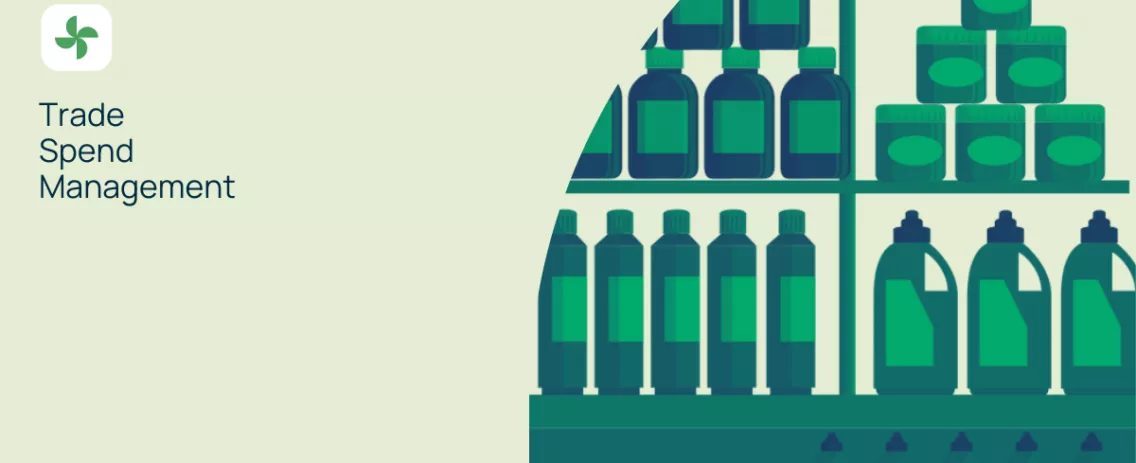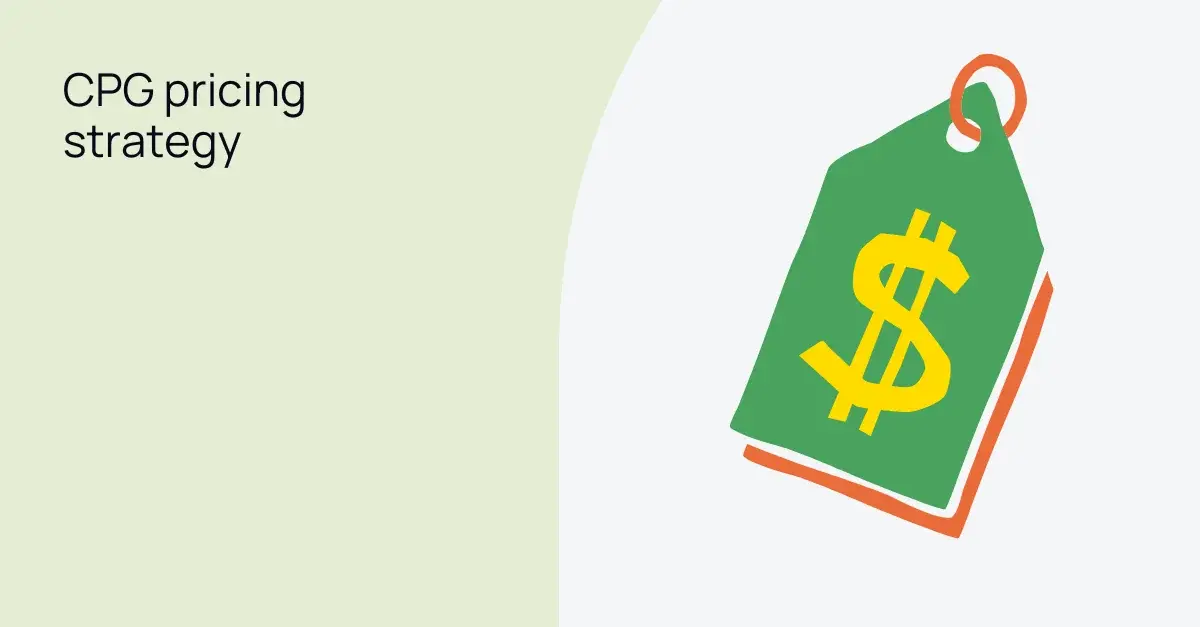
What is trade spend management and why does it matter?
Even the most mutually beneficial partnership can become complicated and fraught if it’s not managed correctly. That’s certainly true when it comes to the management of trade spend, the funding that consumer-packaged goods (CPG) vendors invest with retailers to boost the placement and sales of their products.
That investment can go towards anything from discounts, promotions, and marketing support, to securing premium positions on shelves and within stores. All of this can boost sales and visibility of a given product with consumers and deepen engagement with retailers.
Trade spending activities can encompass multiple product lines, moving through multiple channels, and multiple outlets in multiple geographies. That’s a lot of deals to be negotiated, all of which must be forecast, modeled, tracked, and optimized.
This means managing trade spend effectively is a challenge for CPG manufacturers. But it can deliver a substantial benefit for those organizations that get it right.
Why is trade spend management so important for CPG companies?
CPG manufacturers can use trade spending to cement their relationship with retailers and by extension with consumers. But if manufacturers are not careful, they can end up frittering it away unproductively. At worst they can end up cannibalizing sales, undermining brands, and fracturing their relationships with retailers.
What does effective trade spend management look like?
As a starting point, manufacturers need to be able to produce strategies that really do incentivize retailers. This means they need to make accurate predictions and analyze their investments and activities. This includes pricing, fees, advertising, and negotiations for shelf space.
This will allow them to understand the effectiveness of their campaigns and establish the return on their trade investment. Ideally, they should be able to adjust their strategies mid-flight, boosting budgets to build on success, or paring back spending when it is clear it is not paying dividends.
But successful trade spending should also deliver other benefits. Investing in trade channels should be a collaborative process. Therefore, managing trade spend effectively should deepen relationships with retail partners over time. Along with valuable feedback on programs, this should position account managers to develop more innovative and impactful trade spend strategies for the future.

Challenges CPG firms face in managing trade spend
That’s the ideal. However, there are significant challenges that prevent CPG manufacturers achieving this goal.
Some of these are related to the nature of trade spend activities themselves. Specific promotions can deliver clear benefits such as increasing sales or market share. But it can be difficult to attribute a clear ROI to some broader trade spend activities. Some manufacturer-retailer relationships might also include trade spending that is explicitly classed as “non-performing.”
The retail environment in general, and pricing structures in particular, can be extremely complex. A manufacturer’s relationship with a retailer may span multiple promotions and activities across multiple product lines, and multiple geographies.
Different retailers can have significantly different approaches to managing this complexity – and how they deal with suppliers.
Whatever the nature of the agreements, amassing the data needed to analyze how they are working in practice is a challenge. Manufacturers’ own systems may be siloed, with data locked in legacy systems, or otherwise hard to access. Suppliers too might suffer some or all of these problems.
And while life might be complicated by slow-moving legacy systems, things might be very different on the human side of the equation. Rapid turnover of staff can make it hard to obtain information, collaborate on strategies, and build long-term relationships.
Common mistakes to avoid
Given the complexity of the manufacturer-retailer relationship, and the challenges to achieving complete visibility across even small numbers of campaigns, it can be easy for manufacturers to fall prey to some common mistakes.
It can be easy to become over-reliant on promotions. They may be effective in driving sales, but this might be just a short-term boost. A manufacturer may even find that dedicated customers use promotions to stock up, hurting sales in the long run.
Inconsistent pricing can lead to customer and retailer confusion, to the point of undermining trust in a brand.
Alternatively, account managers might find it tempting to simply copy previous promotions, effectively cutting and pasting them into this year’s plan without really analyzing how the market has changed.
All these problems can result in a one-size-fits-all approach, ignoring the complexity of the environment, and failing to optimize programs accordingly.
Conversely, staff at CPG manufacturers may operate on an “every man for himself” basis. They strike deals that may work for specific products or retailers. But not for the team, or the company, as a whole.
All these traps will also prevent them using their trade spend, and the insights it generates, to develop fresh, innovative programs, and deepen their relationships with their retail partners.

Limitations of legacy systems and traditional ways of working
Many of these potential traps are down to a lack of visibility and the meaningful data that can help account managers develop plans based on solid analysis and forecasts and optimize them in real time.
This can be because CPG manufacturers will be relying on legacy platforms, such as ERP systems, to power these operations. These systems might well be resilient, but they’re rarely flexible.
When it comes to informing their day-to-day operations, account personnel will often be modeling in spreadsheets. This means they’re wasting time cutting and pasting data. Which can result in official workflows being circumvented, and the risk of compliance protocols being breached.
Benefits of using trade spend management software for CPG companies
This is where a dedicated software solution can really help. Modern trade spend management software should allow teams to easily pull together and manage the full range of data sources they need.
That includes historical data and live information from their companies’ systems. But it also means syndicated and third-party data where appropriate. And it should be connected to the manufacturer’s accounting and financial reporting systems.
This will provide them with a clear overview of how their activities are playing out in the real world. It will enable them to make informed decisions, as they track ROI over time, spot trends, and optimize campaigns.
This improved visibility will leave them in a better place when it comes to planning future trade spend strategies and allocating budgets. Because they can pinpoint what went right, or wrong, in the past. If they choose the right platform, they can also exploit machine learning and artificial intelligence. This will not only allow them to gain deeper insight into their activities, but also generate well-founded, accurate forecasts for future actions.
On a more prosaic level, they will also be able to eliminate manual activities, such as pasting data into spreadsheets. Or wasting time setting up data integrations with disparate systems. Instead, they can configure streamlined, automated workflows, which also make it easier to meet audit and compliance requirements.
All these time savings mean they can focus on those areas where their skills will pay the highest dividends. And they will have the time – and the data – to work more closely with retailers, so that every campaign results in a win-win outcome.

Visualfabriq Trade Spend Management: How does it work?
Creating and executing effective trade spend activities requires a holistic approach and a conscious effort to create win-win strategies with your retail partners.
Visualfabriq built its Trade Spend Master to enable this. The software pulls together all the data you need to develop your forecasts and strategies, underpinned by cutting-edge artificial intelligence.
It provides easy integration of ex-factory, EPOS and syndicated data. So that you’ll have full visibility into your strategies from the outset, allowing you to track profitability and ROI.
This means you can optimize your trade spend strategy in real-time. If you want to adjust prices and discounts, all it takes is a single click.
You can also configure a workflow that works for you, eliminating manual work, and building in all the appropriate approvals.
It gives all parties one version of the truth, including your colleagues in finance or executive management.
This means you can concentrate your efforts where they are going to pay the biggest reward. This includes the most important challenge of all, delivering trade spend strategies that clearly benefit you, your retail partners, and your consumers.
Trade spend: key takeaways
Short-term or one-size-fits-all approaches to trade spend management in CPG are just not sustainable in the long term.
What manufacturers and retailers need is a holistic approach, that uses data-driven insights to develop and optimize trade spending programs for the long term. This will deliver the best possible outcomes for all parties – including customers.
This builds a deeper level of trust between the manufacturer and retailer. But it also requires a software solution that delivers trade spend optimization. It must allow you to bring together historic and up-to-the-minute data and give you the tools to model it using the latest analytical techniques.
That software must also allow you to automate workflows, easily collaborate with internal and external partners, and ensure that all activities are approved and auditable.
If you want to learn more about how Visualfabriq’s Trade Spend Master allows you to do all this and more, book a demo today.

.png)

.webp)